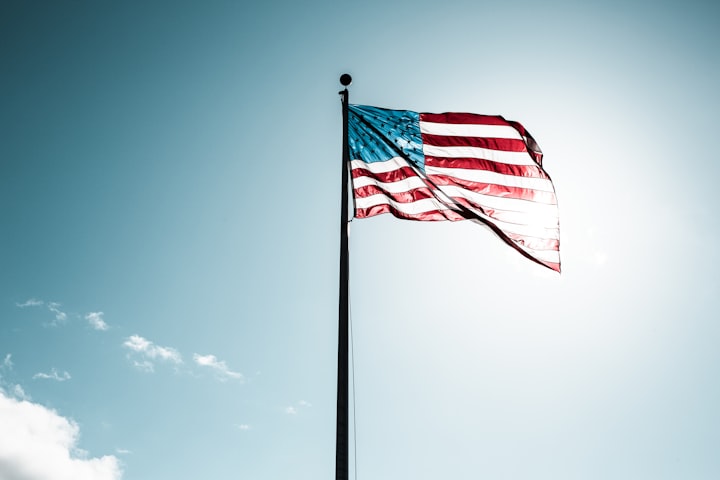Whitney Houston & the American Gold Standard
How it took Whitney Houston only 3 minutes to unite a nation.

There she was, standing in the belly of packed stadium, waiting in the dark, in the silence. The static squawk of a nearby walkie-talkie makes everyone jump: “CZZHK…Standby for Whitney….Standby for Whitney…CZZHK.” She loosens her muscles as her flanking of 6 bodyguards do the same. She shakes off her nervous energy and savors these last couple seconds of silence, waiting for that specific noise. That special sound they’ve been waiting for. That special sound that means it's time to go to work. She looks at the walkie talkie. “CZZHK!” She smiles, here it comes. “CZZHK…and its a green light for Whitney Houston, green light for Whitney Houston.”
The year was 1991. President George H.W. Bush had just announced Operation Desert Storm, making the Gulf War the United States’ first major conflict since the Vietnam War ended. Nearly 697,000 American soldiers were deployed. 697,000 sons & daughters, fathers & mothers, leaving their families behind. It had been over a decade since the American people had felt what wartime was like, & they weren’t used to it. Fear began to creep into the culture. Fear of losing their loved ones overseas. Fear of terrorist attacks. And, specifically, fear of a terrorist attack at the most watched, highly attended American event of the year: Super Bowl XXV.
The American culture was in desperate need of some semblance of hope and of unity. In a Pre-9/11 world, Americans where not used to metal detectors & SWAT teams guarding the stadium. This was an escalation in fear the country hadn't faced in decades. Americans were holding their breath, afraid the worst was going to happen.
In an instant, Americans could finally breathe a sigh of relief. Their anxieties could be momentarily held at bay when they finally saw her. Whitney Houston, only 28 years old, struts out of the tunnel & toward the 50 yard line. The sound of 73,000 people cheering as they get their first sight of her.
Even in 1991, it was still rare that a black woman could be so universally loved. Early in Houston’s career, the television channel MTV often refused to play music videos of black artists, rejecting them by claiming there was “no audience for black music.” When Houston’s “Saving All My Love For You” became such a hit, audiences begged MTV to play the video. Whitney said that MTV “had no choice but to play it, and I love it when they have no choice.”
No choice, either, for Whitney Houston, when the opportunity arose to perform “The Star-Spangled Banner” in her own way. Houston & musical director Rickey Minor agreed to collaborate on their interpretation of the century old anthem. Originally in a waltz 3/4 tempo, historically based on European music, Houston & Minor decided to change it to a more modern, African-American inspired 4/4 tempo. They were inspired by a more jazzy, gospel sound, as opposed to the song's original British origins. It was changes like this that helped make the anthem less tied to its European origins and embrace the new culture that modern America had become.
Gone are the days where performers of the national anthem wore suit & ties or elegant dresses. As Whitney walked out to that podium in the middle of Tampa Stadium, she wore a pair of Nike Cortez’s and red, white & blue tracksuit. Comfortable, flamboyant, and proud of it’s heritage. The outfit was the epitome of American individualism, and it mirrored Whitney’s performance perfectly.
Along with Jahja Ling, the renowned Asian-American conductor, and the Florida Orchestra, Whitney Houston settled into her spot on the podium. From the stadium’s PA system, “…And now, to honor America, especially the brave men and women serving our nation in the Persian Gulf and throughout the world…please, join in the singing of our national anthem.”
That was her cue. As the crowd of 73,000 in attendance stood in their seats, Whitney got up to the mic and did her job. She sang. She sang the United States of America’s national anthem. She sang it in a way that no one had done before. She sang it in a way that everyone has been trying to replicate since. She sang the song in a way that became the American Gold Standard.
Not only is it the best version of the song, but it’s also the most reliable. If there’s ever an event that doesn’t have a live singer to perform the anthem, the venue almost always plays Whitney’s version. It transcends regional culture. They play her version in basketball games in New York. They play her version at rodeos in Texas. To this day, in American culture, Whitney Houston’s version of “The Star-Spangled Banner” is as absolute as diamonds.
Years later, if you asked someone which team won Super Bowl XXV, most of them wouldn’t know. No one cares. No one cares whether the Buffalo Bills or the New York Giants won. No one cares that Whitney lip-synced the performance from a recording she made a week prior. There’s only one thing people care about regarding Whitney Houston’s Gold Standard performance. They care that a black woman did her best to bring unity to the United States.






Comments
There are no comments for this story
Be the first to respond and start the conversation.